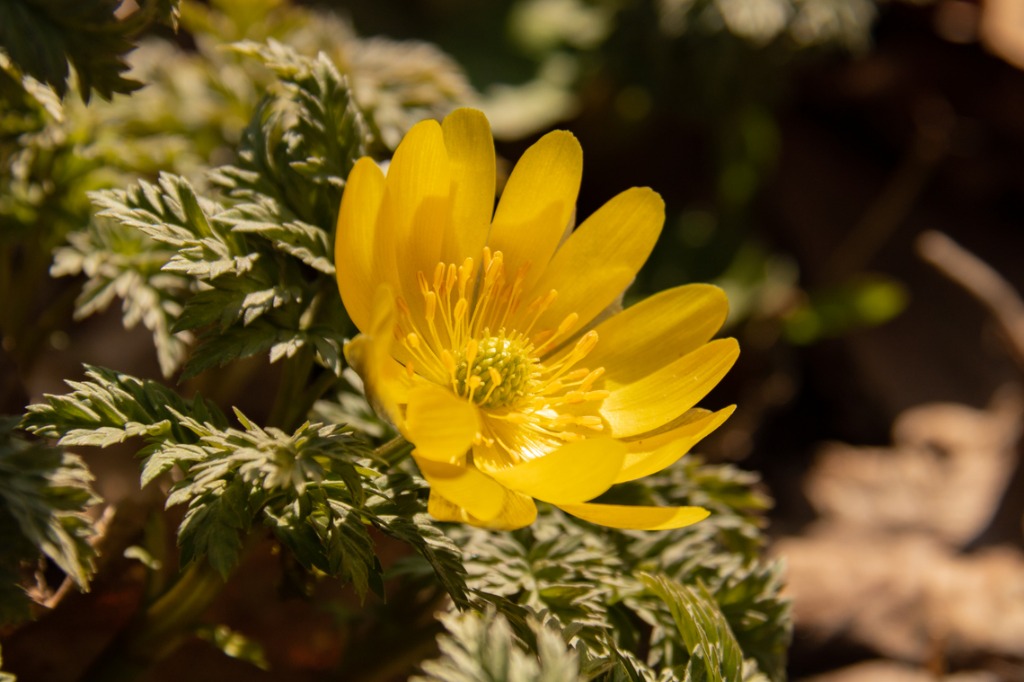Pheasant's eye
(Adonis vernalis)

Description
Adonis vernalis, known variously as pheasant's eye, spring pheasant's eye, yellow pheasant's eye and false hellebore, is a perennial flowering plant in the buttercup family Ranunculaceae. It is found in dry meadows and steppes in Eurasia. More specifically, this plant grows in a wide range of locations which include open forests, forest clearings, dry meadows, mesic steppe, and mostly calcareous soil. Isolated populations are found from Spain in the west across Central Europe with fine examples in Valais, Switzerland, and southern Europe, reaching southern Sweden in the north and Abruzzo in the south,with its main area of distribution being the Pannonian Basin and the West Siberian Plain. In contrast to most other European Adonis species, the flowers appear in springtime, and are up to 80 mm (3.1 in) in diameter, with up to 20 bright yellow petals. Not only do the flowers begin to grow, but so do the plants aerial organs, from around April to May. The plant is poisonous, containing cardiostimulant compounds, such as adonidin and aconitic acid. Infusions of the plant are used in the medicine Bekhterev's mixture. Due to the cardiac-enhancing effects of Adonis species (including Adonis vernalis), this plant has a history of use in European and Chinese folk medicine to treat various health problems. It has been used in the Soviet Union to treat edema or swelling and as an alternative cardiac agent.In 1879, a Russian medical doctor, N. O. Buhnow, first introduced into medicine alcoholic extracts of the plant as a cardiac stimulant. In 1898, a mixture of the plant extracts with sodium bromide or codeine was suggested (by Vladimir Bekherev) to treat heart diseases, panic disorder, dystonia and mild forms of epilepsy.Aqueous infusions of the aerial parts of the plant have been traditionally used in Siberia against edema, cardiac edema and several other issues that are heart related, kidney diseases, and even malaria.The biological activity of this extract was defined as 50–66 frog units (amount or liquid of substance that causes the arrest of the heart of a frog) and 6.3–8.0 cat units (amount or liquid of substance that causes the arrest of the heart of a cat) and large enough doses can be toxic.
Taxonomic tree:







